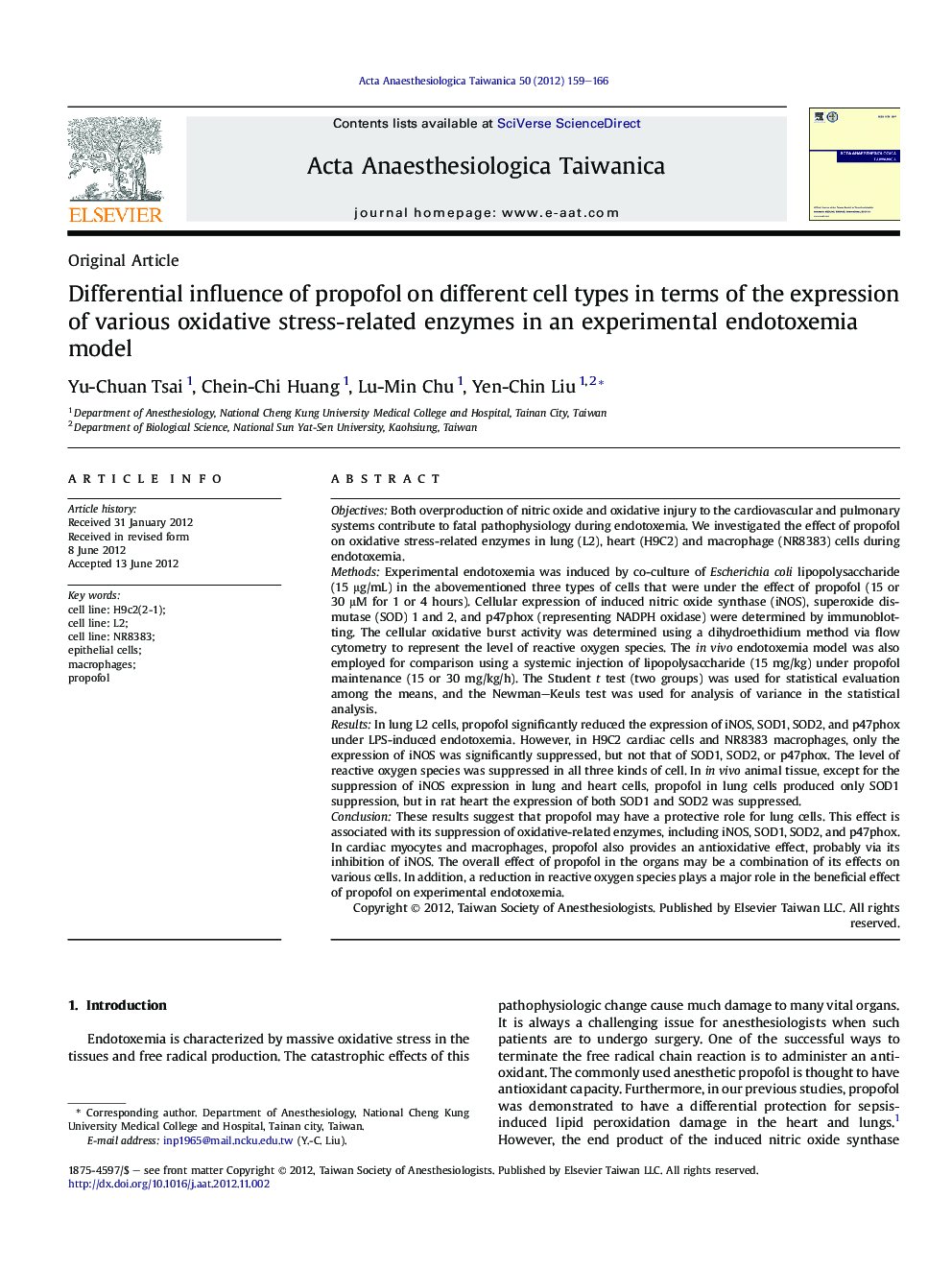| Article ID | Journal | Published Year | Pages | File Type |
|---|---|---|---|---|
| 2741429 | Acta Anaesthesiologica Taiwanica | 2012 | 8 Pages |
ObjectivesBoth overproduction of nitric oxide and oxidative injury to the cardiovascular and pulmonary systems contribute to fatal pathophysiology during endotoxemia. We investigated the effect of propofol on oxidative stress-related enzymes in lung (L2), heart (H9C2) and macrophage (NR8383) cells during endotoxemia.MethodsExperimental endotoxemia was induced by co-culture of Escherichia coli lipopolysaccharide (15 μg/mL) in the abovementioned three types of cells that were under the effect of propofol (15 or 30 μM for 1 or 4 hours). Cellular expression of induced nitric oxide synthase (iNOS), superoxide dismutase (SOD) 1 and 2, and p47phox (representing NADPH oxidase) were determined by immunoblotting. The cellular oxidative burst activity was determined using a dihydroethidium method via flow cytometry to represent the level of reactive oxygen species. The in vivo endotoxemia model was also employed for comparison using a systemic injection of lipopolysaccharide (15 mg/kg) under propofol maintenance (15 or 30 mg/kg/h). The Student t test (two groups) was used for statistical evaluation among the means, and the Newman–Keuls test was used for analysis of variance in the statistical analysis.ResultsIn lung L2 cells, propofol significantly reduced the expression of iNOS, SOD1, SOD2, and p47phox under LPS-induced endotoxemia. However, in H9C2 cardiac cells and NR8383 macrophages, only the expression of iNOS was significantly suppressed, but not that of SOD1, SOD2, or p47phox. The level of reactive oxygen species was suppressed in all three kinds of cell. In in vivo animal tissue, except for the suppression of iNOS expression in lung and heart cells, propofol in lung cells produced only SOD1 suppression, but in rat heart the expression of both SOD1 and SOD2 was suppressed.ConclusionThese results suggest that propofol may have a protective role for lung cells. This effect is associated with its suppression of oxidative-related enzymes, including iNOS, SOD1, SOD2, and p47phox. In cardiac myocytes and macrophages, propofol also provides an antioxidative effect, probably via its inhibition of iNOS. The overall effect of propofol in the organs may be a combination of its effects on various cells. In addition, a reduction in reactive oxygen species plays a major role in the beneficial effect of propofol on experimental endotoxemia.
